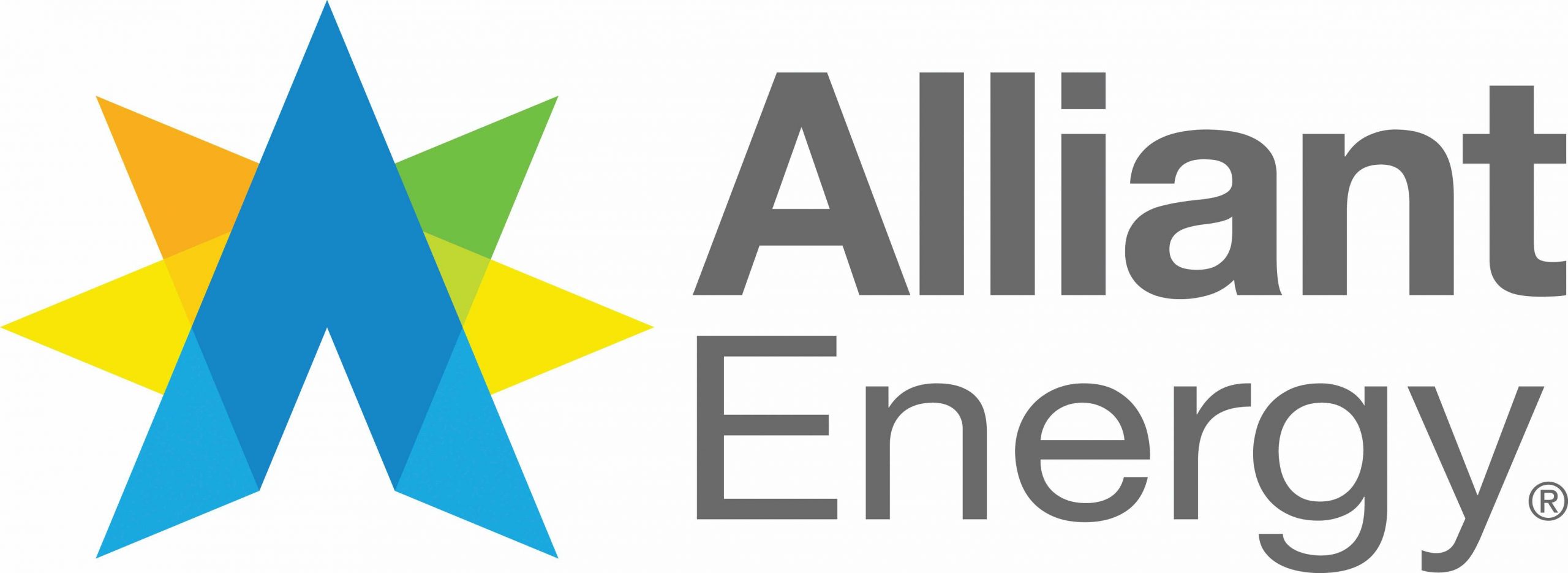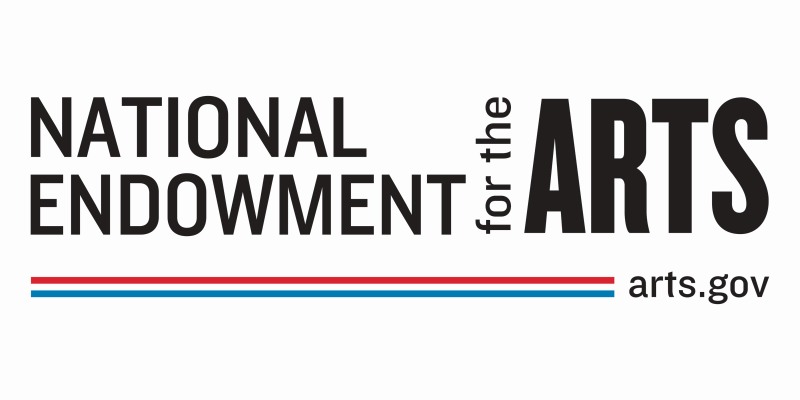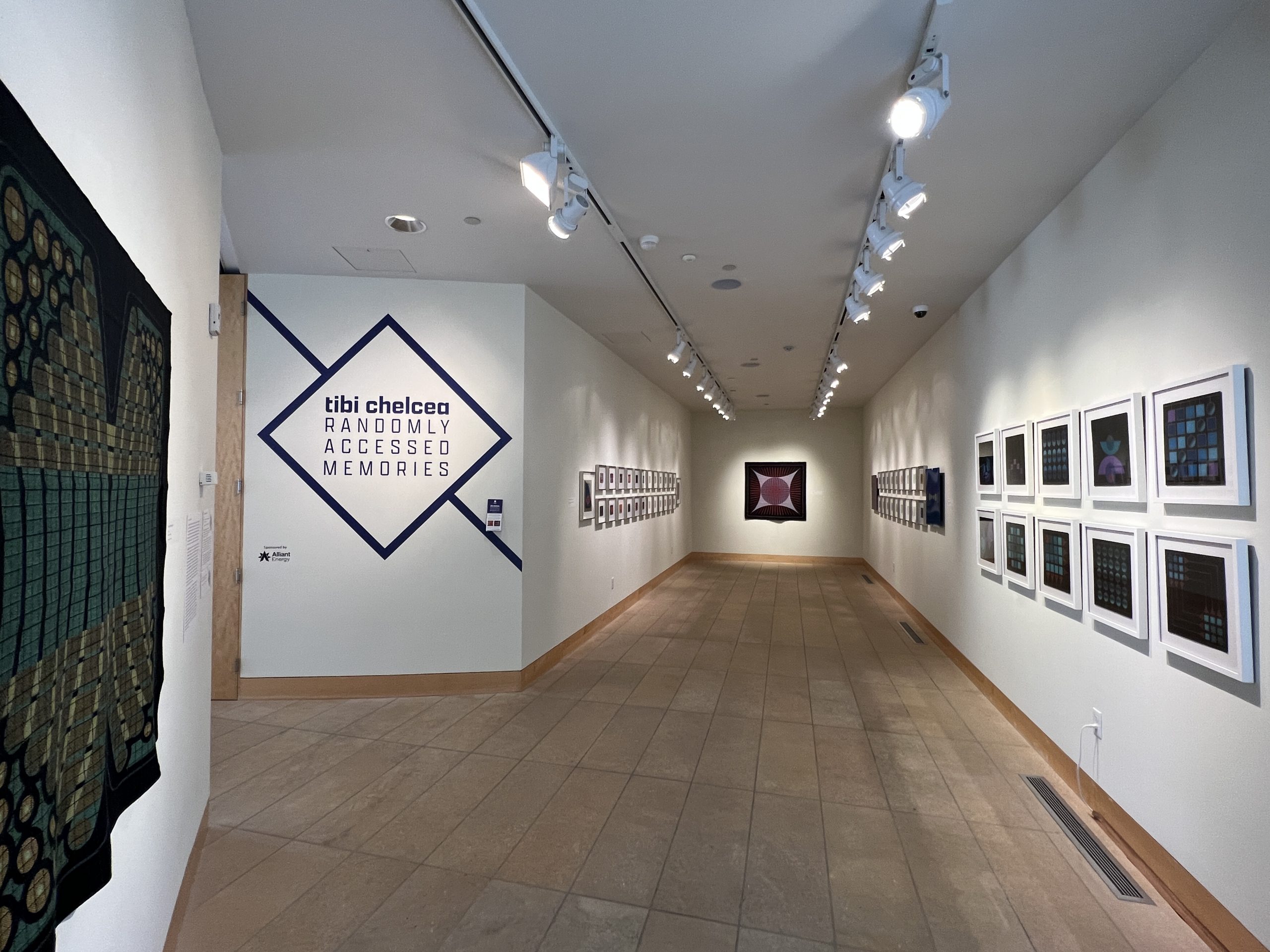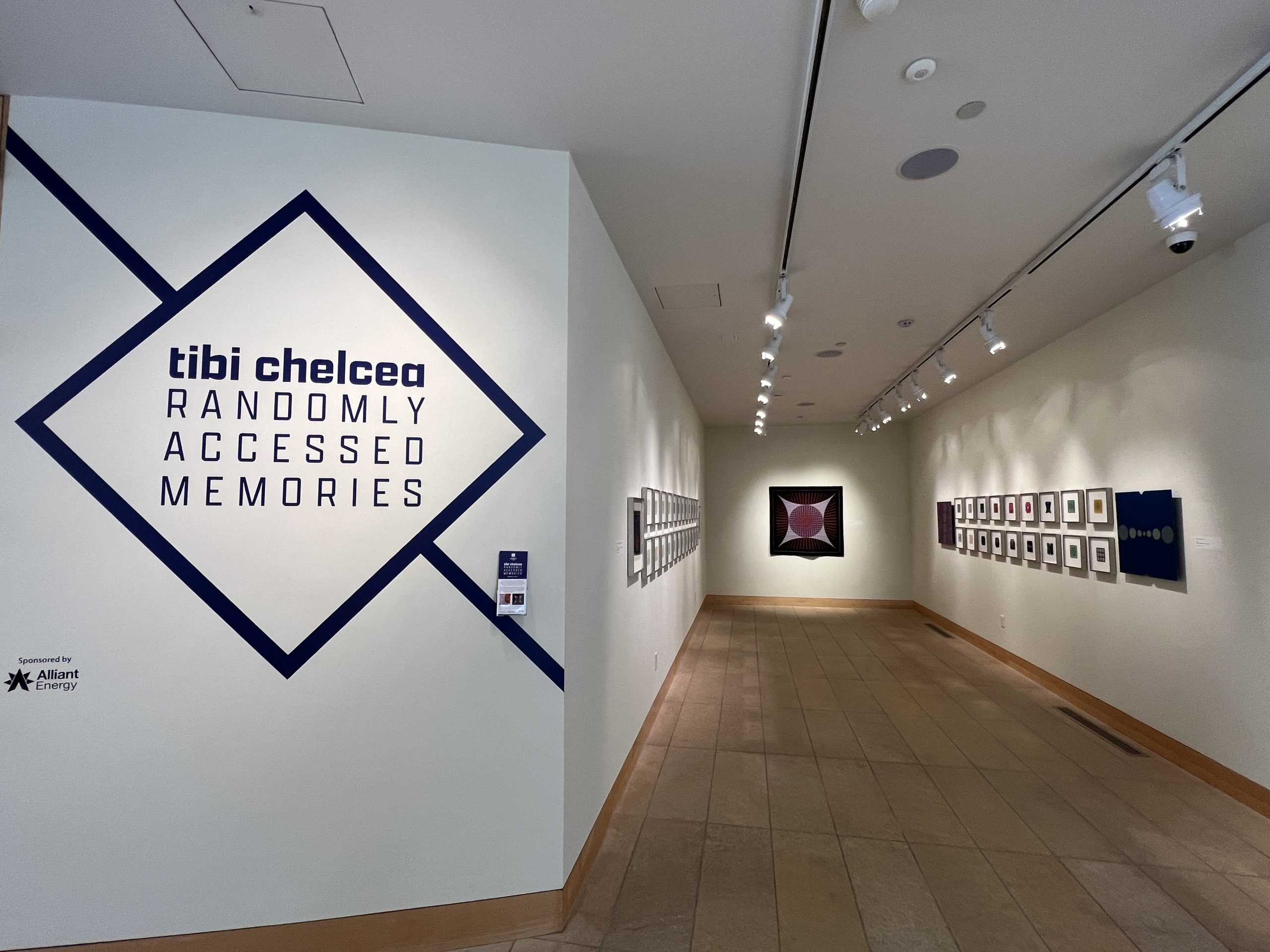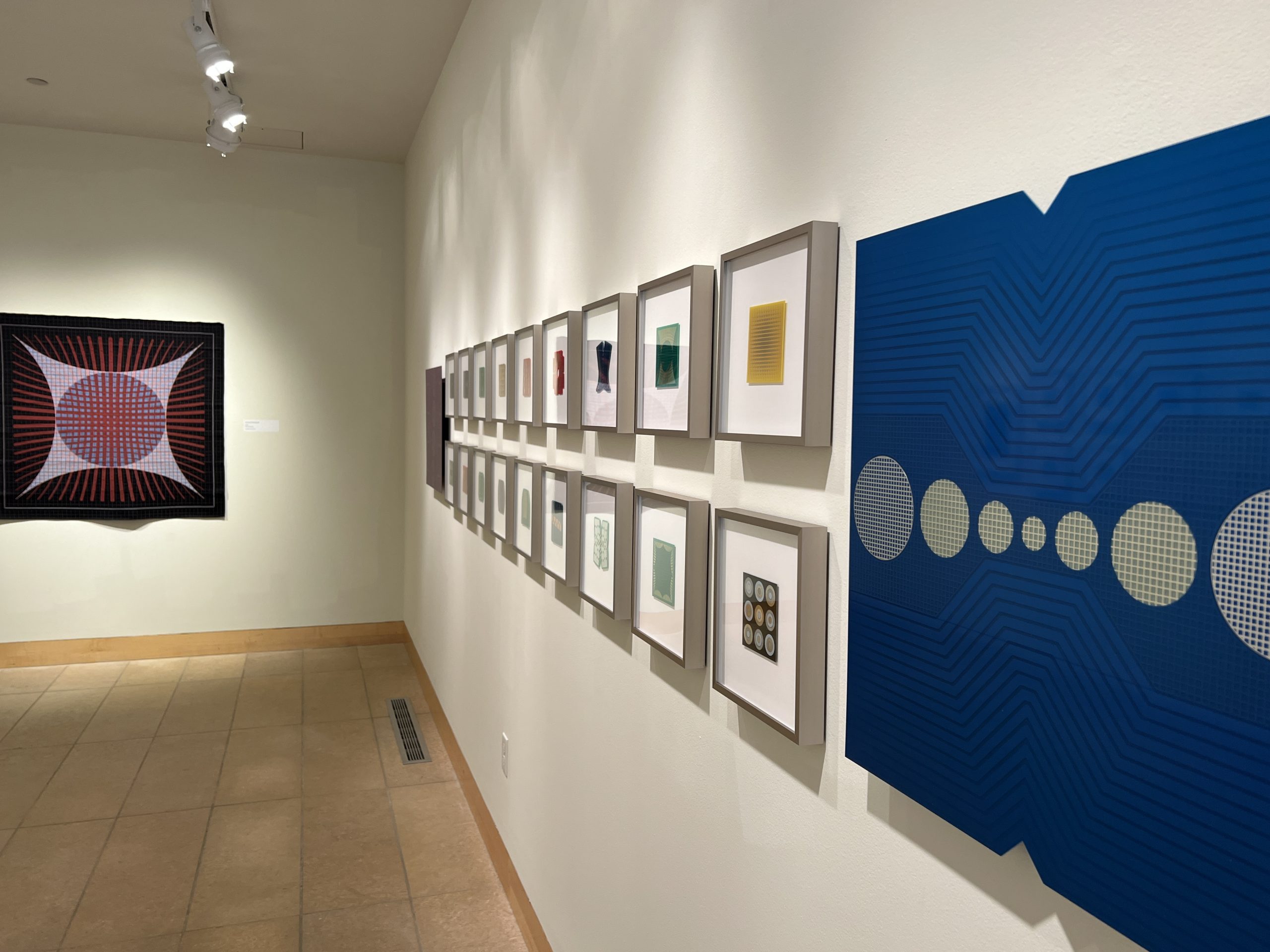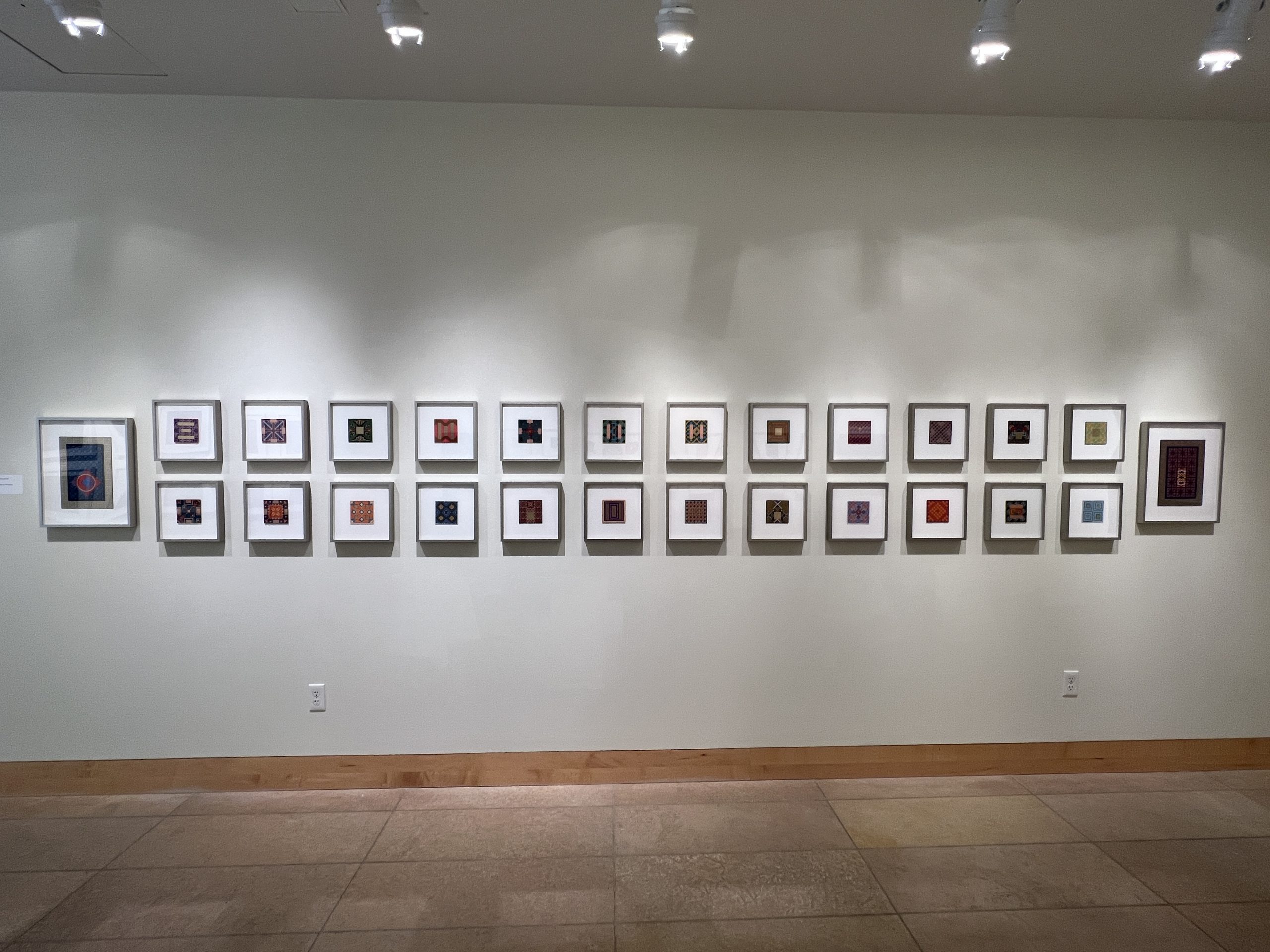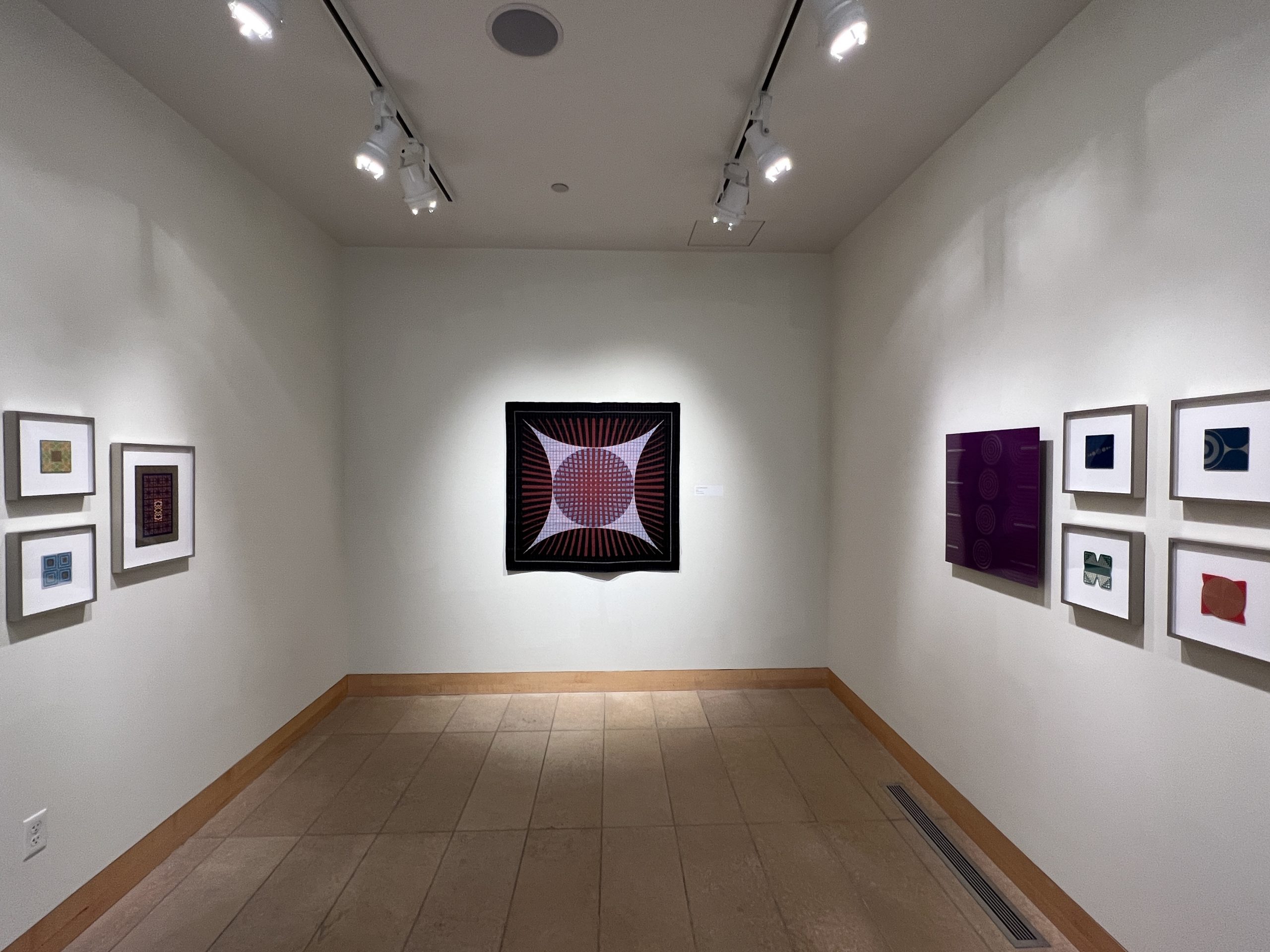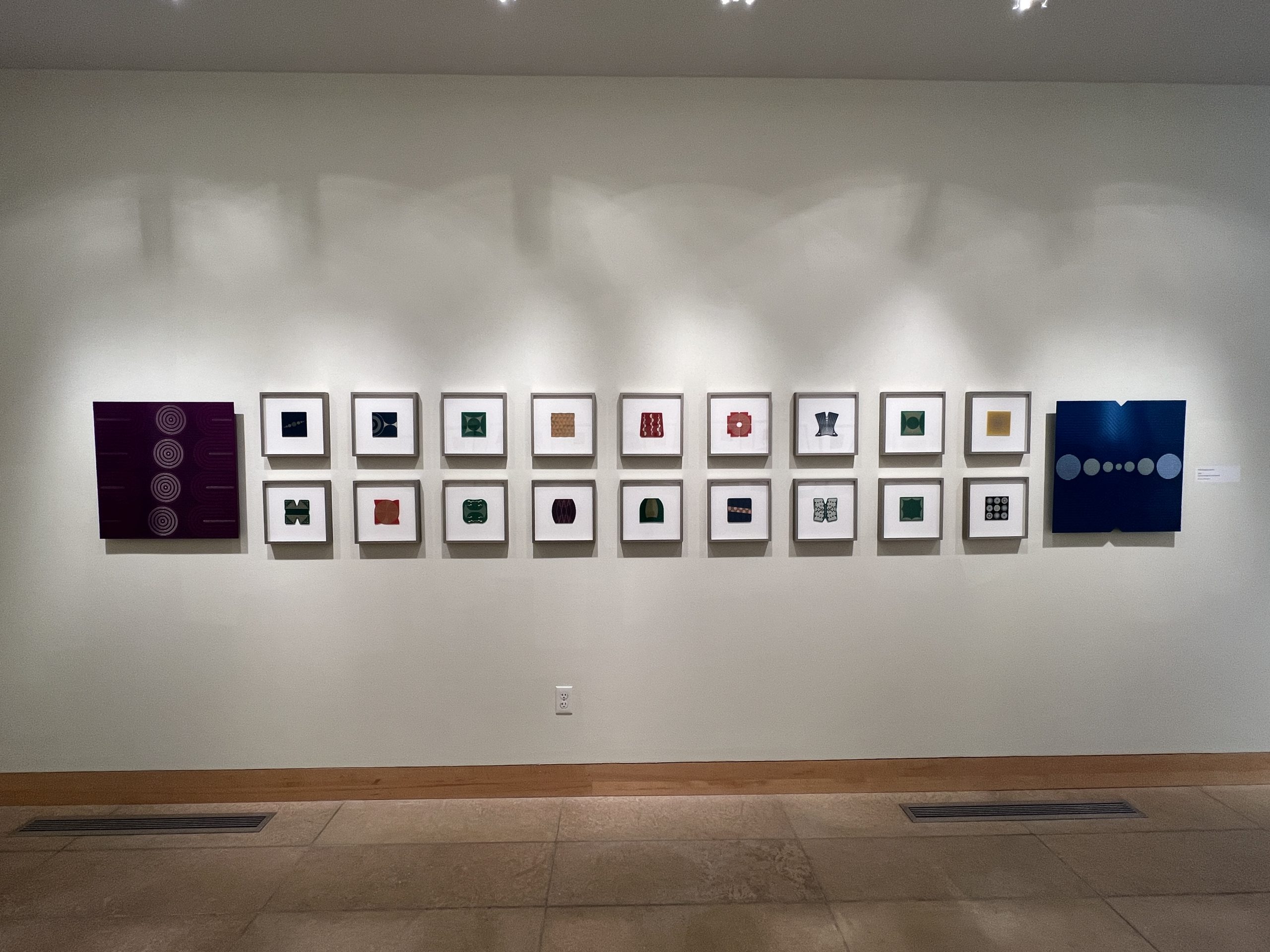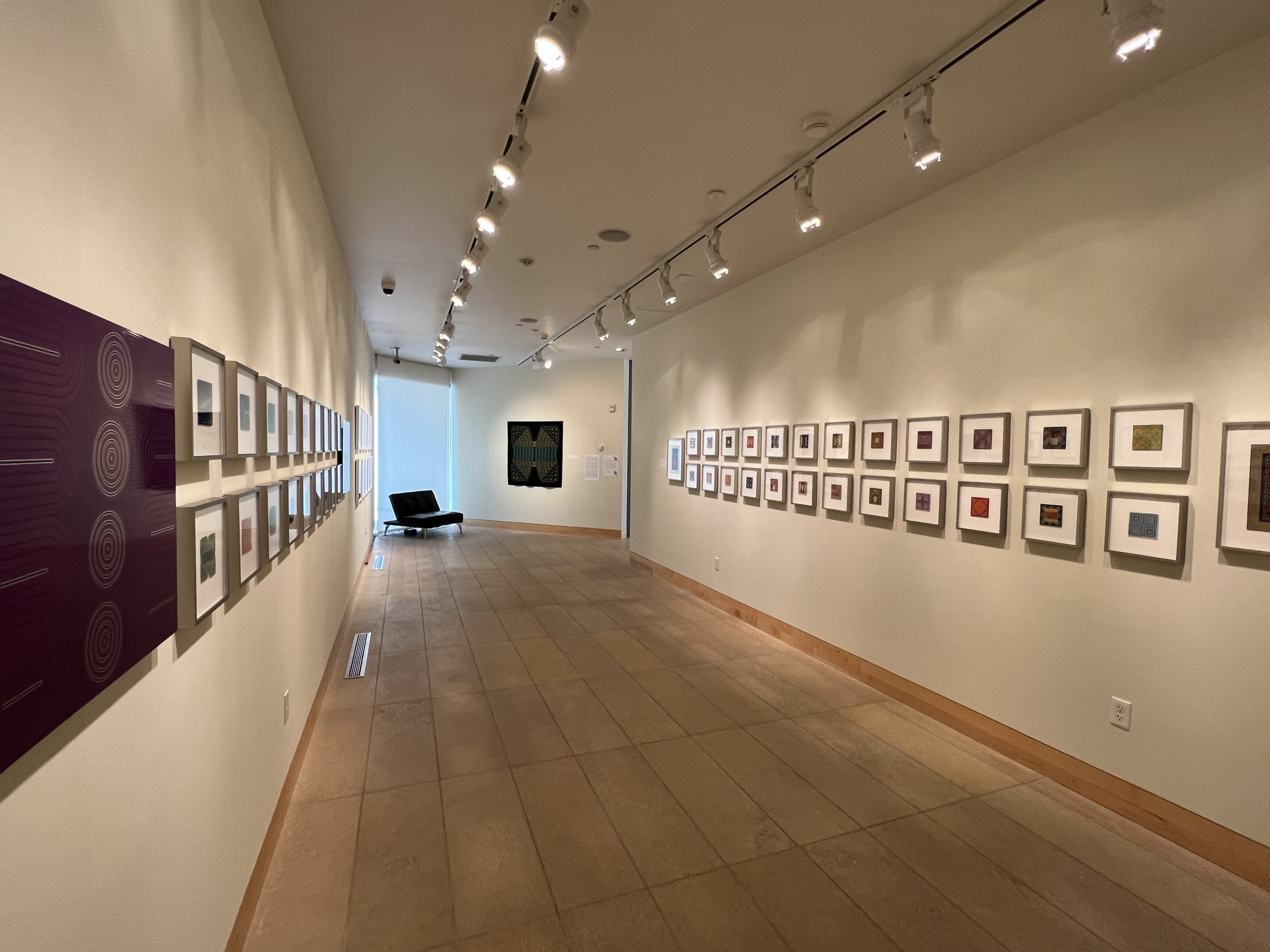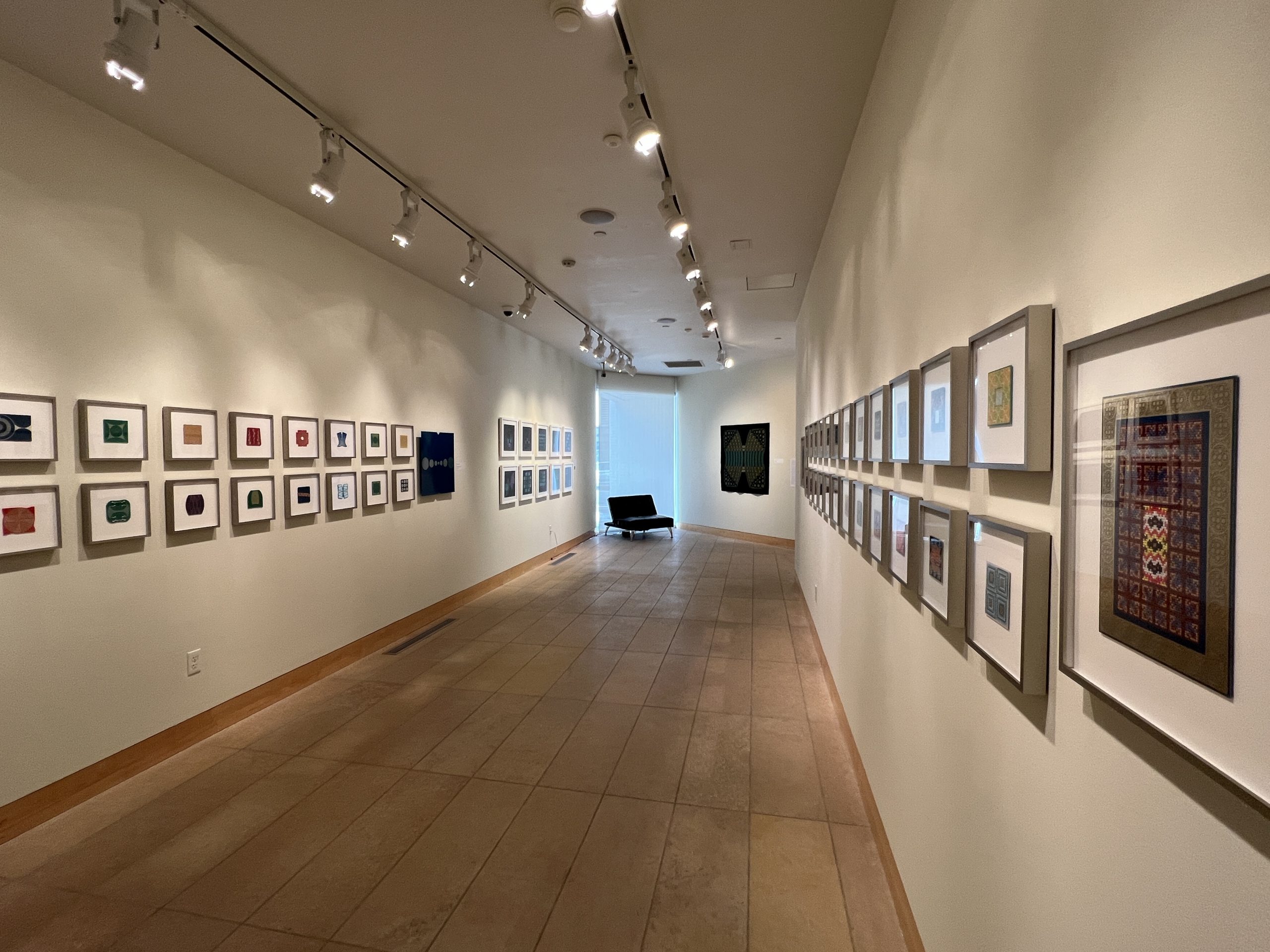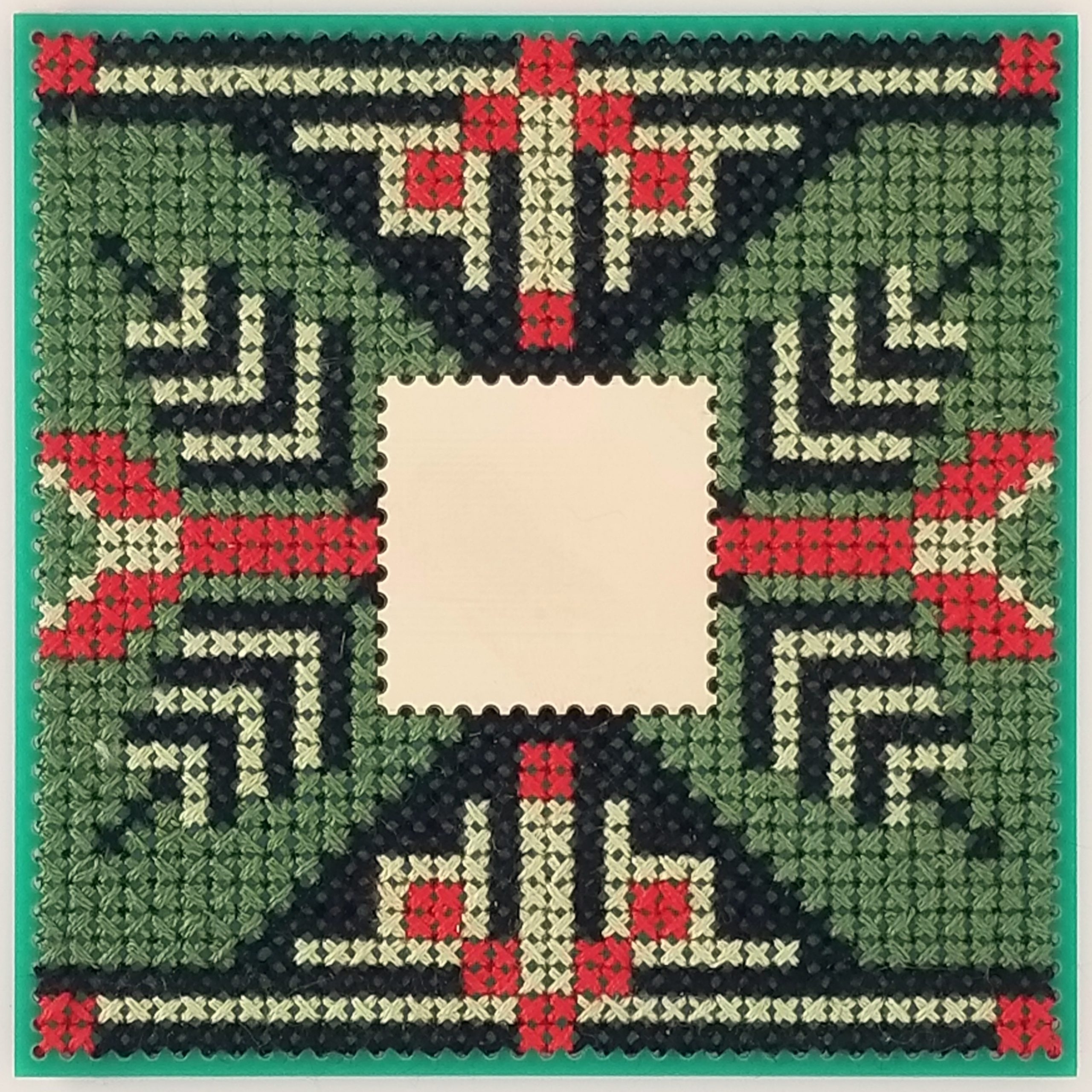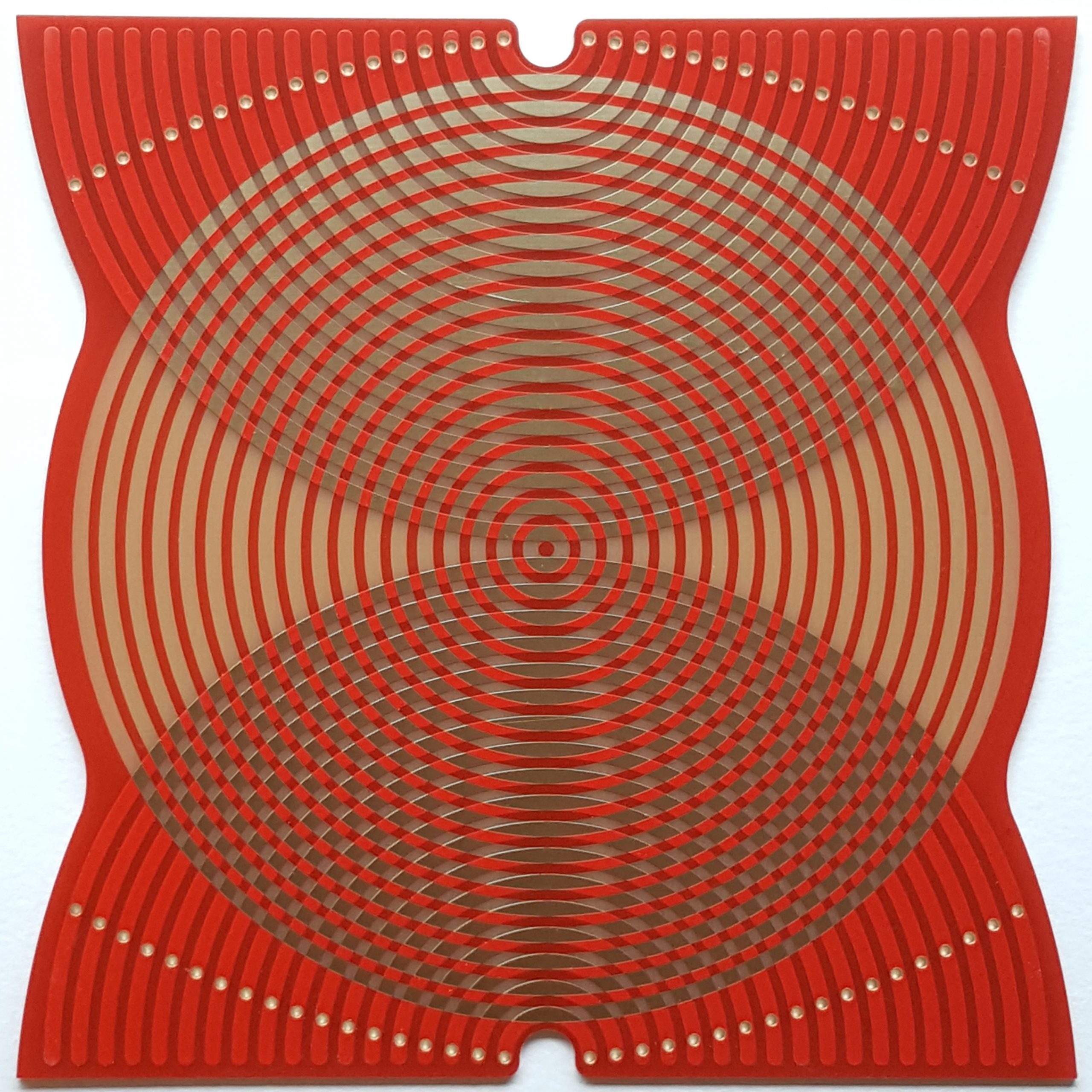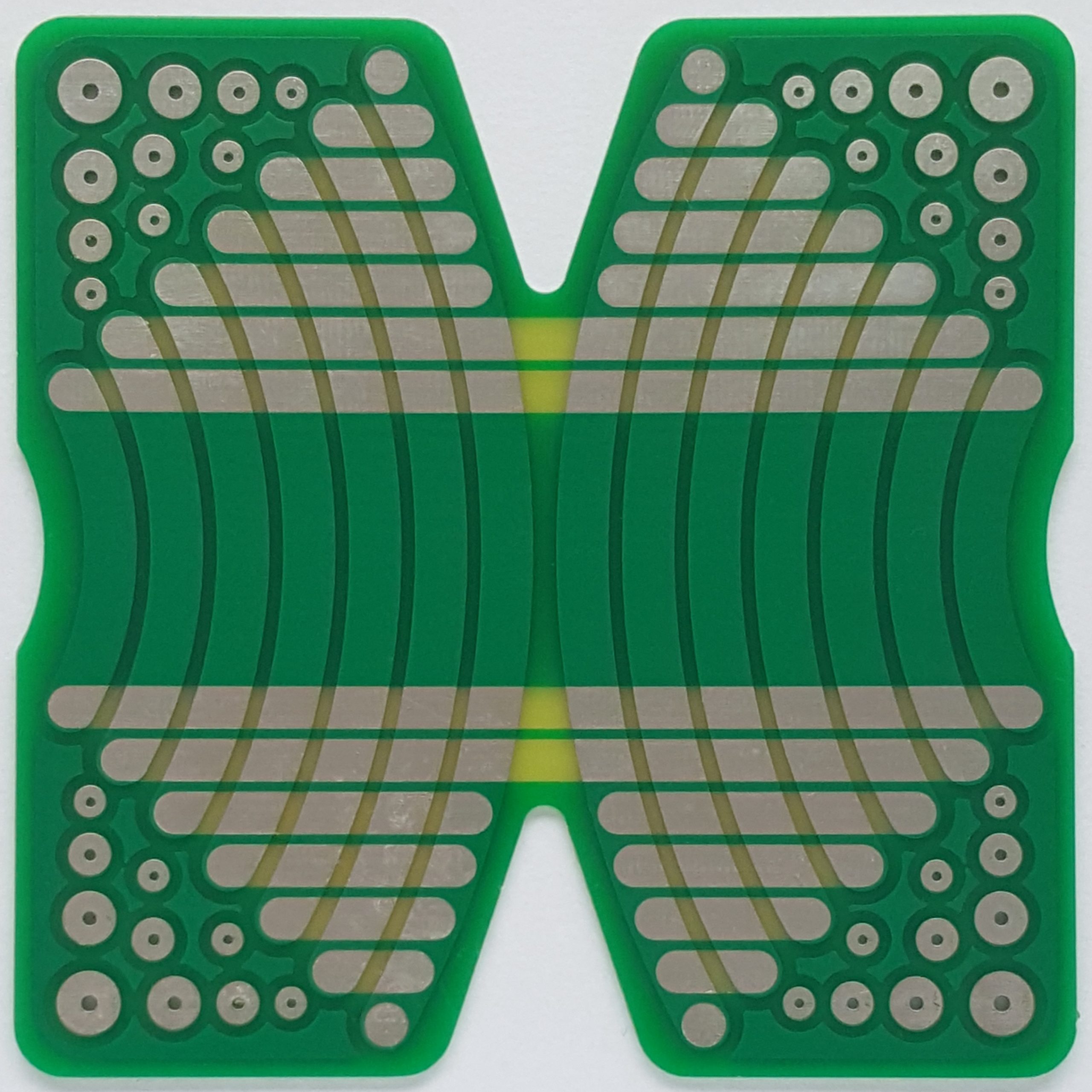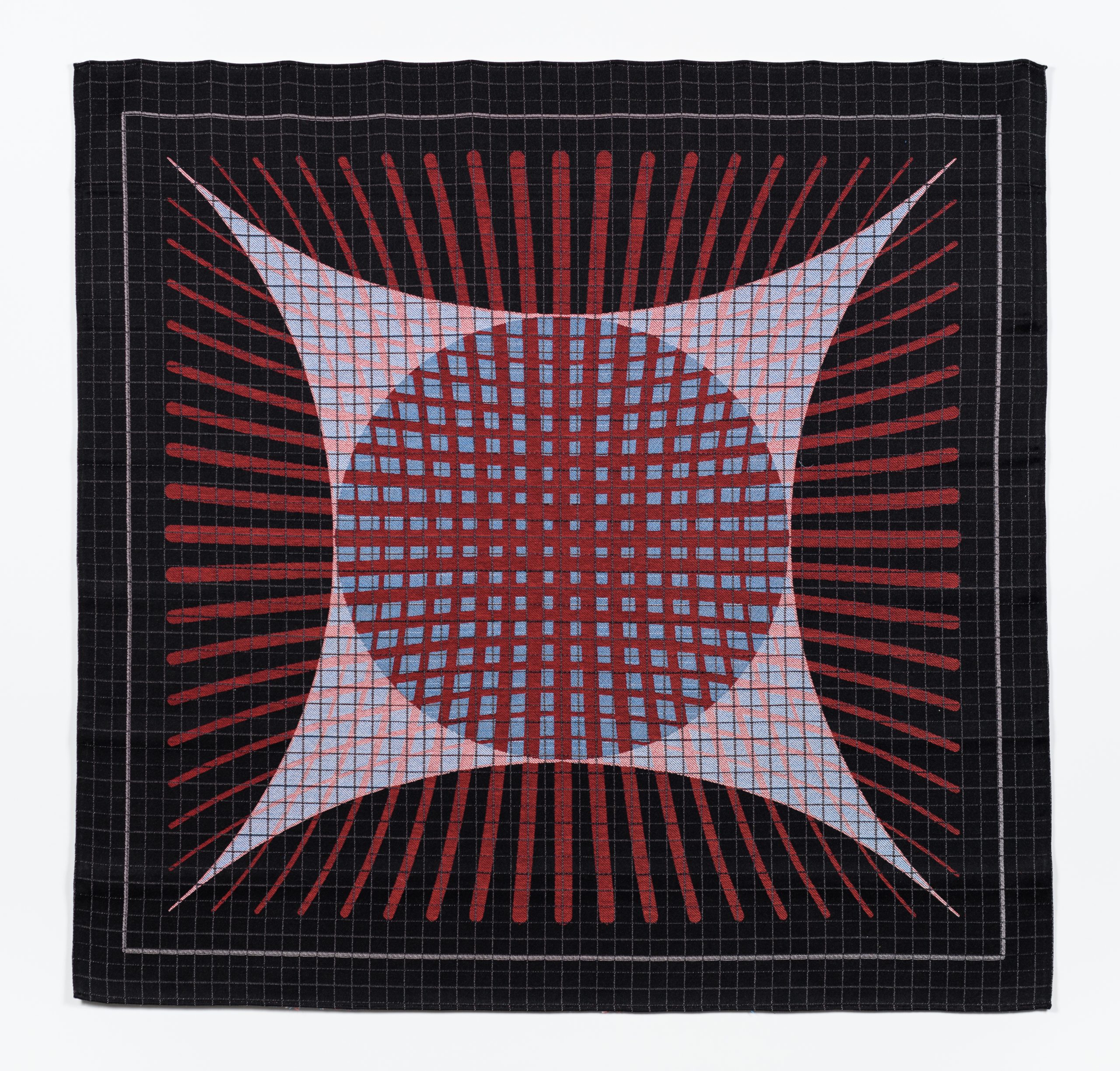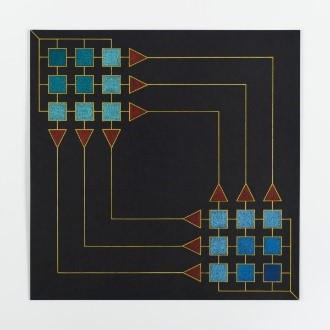Overview
Iowa-based artist Tibi Chelcea combines his background in computer engineering with his artistic practice and Romanian heritage to create technologically-inspired, historically-grounded drawings, paintings, and digital and textiles works.
Chelcea's drawings and paintings are inspired by electronic circuit board designs and explore the graphic potential of electronic symbols. His printed circuit boards pioneer new techniques for using electronic design software to create art. These works are manufactured using the same process as actual circuit boards but are not functional.
Chelcea’s textile works are part of an ongoing exploration of the connections between textile manufacturing and the electronics industry. His large textiles are inspired by Jacquard fabric. Historically, Jacquard looms influenced the development of computing. The punched cards that controlled the looms were used for decades in early electronic computers. His smaller weavings combine textile with circuit boards and introduce hand embroidery. The cross-stitching patterns he uses are based on electronic symbols and recall the traditional Romanian patterns that he saw in his grandparents’ home during his childhood in Romania.
Tibi Chelcea moved to the United States in 1997 and received his Ph.D. in computer science at Columbia University. He worked at Carnegie Mellon University in Pittsburgh, Pennsylvania before settling to Iowa. He is currently a software engineer in the agricultural industry and lives with his wife and two children in Ames.
Artist's Statement
Technological products become obsolete at an increasingly rapid pace; throughout my career as an engineer, I have seen my share of technologies come and go. My artistic work uses these objects in ways they were not mass-produced, emphasizing their physical beauty. Created by employing drawing, printmaking, painting, and programming techniques, these works allude to serial design, as well as to issues of consumption, labor, and artistic collaboration.

By using scientific concepts culled from my engineering background, my art places these objects in new and atypical historical contexts. For example, traditional garment patterns from my home country are embroidered on custom circuit boards, and images from U.S. patents for obsolete technologies are the source of inspiration for pencil and ink drawings. Circuit board manufacturing is used to create limited editions akin to traditional printmaking, and their computer models become weavings illuminating the connections between electronics and textiles. Looking towards the future, I use my drawings inspired by electronic symbols to train artificial intelligence systems to imagine new symbols, albeit ones that may never appear in engineering textbooks.
Using these technologies in my artworks constitutes an homage to the countless hours engineers like myself have spent in designing these products with such short life spans. In addition, the very slow process of creating these artworks entirely bypasses the inherent speed and precision of everything electronic and new, thus transforming disregarded objects into a meditative experience. Engineering makes it possible to build extremely fast technology that works effortlessly; engineering is also successful when it is possible to ignore its complex creation process. My artworks urge people to appreciate all this hidden technology not only as something utilitarian, but also aesthetically, and to reconsider the speed of life these electronic products enable by placing these electronics on radically different time scales.
Selected Works From the Exhibition
"Songs of Technological Obsolescence" (2022, found and recorded sounds).
To listen to the whole album, click here
Artificial Intelligence
Tibi Chelcea uses A.I. in two main ways – in the creation process and as a storyteller. For some works, A.I. becomes a studio collaborator. The A.I. learns from the artist’s work, and, in turn, inspires the artist. For example, Chelcea trained an A.I. system (StyleGAN2, from Nvidia) on a large collection of electronic and electrical symbols, and then instructed it to generate new, unique symbols. Chelcea used these symbols in some of the works in the exhibition.
Another body of A.I. work comes from questions Chelcea had about the seemingly simple act of telling a story based on an image. As the adage goes, a picture is worth a thousand words; humans are extremely good at creating and imagining stories based on images. This led Chelcea to ask, can a machine imitate this most human trait and create stories based on images? How would these stories be like the human-made ones, and how would they differ?
To answer these questions, Chelcea created an A.I. bot, named Coco Gepetto, to read and interpret images. The bot uses Google’s Vision A.I. and Microsoft’s Azure Computer Vision to analyze images and OpenAI’s GPT-3 to generate stories based on the analysis. The story creation is controlled by variables such as the creativity level (known as temperature) and the mood. Use the links below to access Coco Gepetto.
